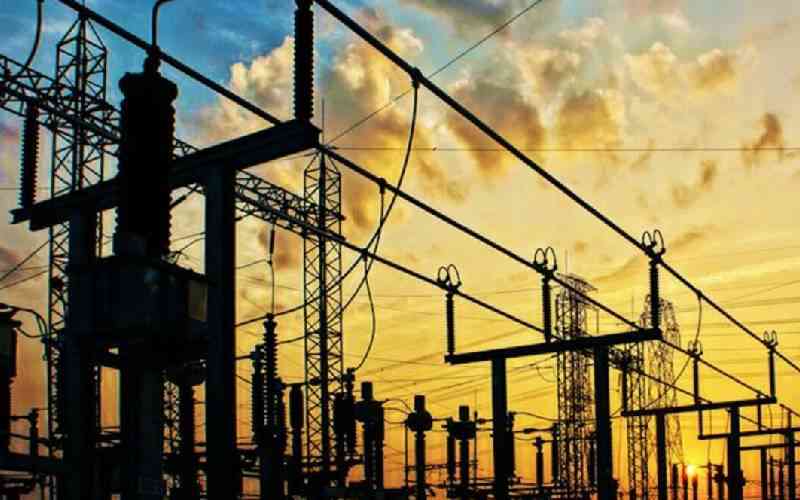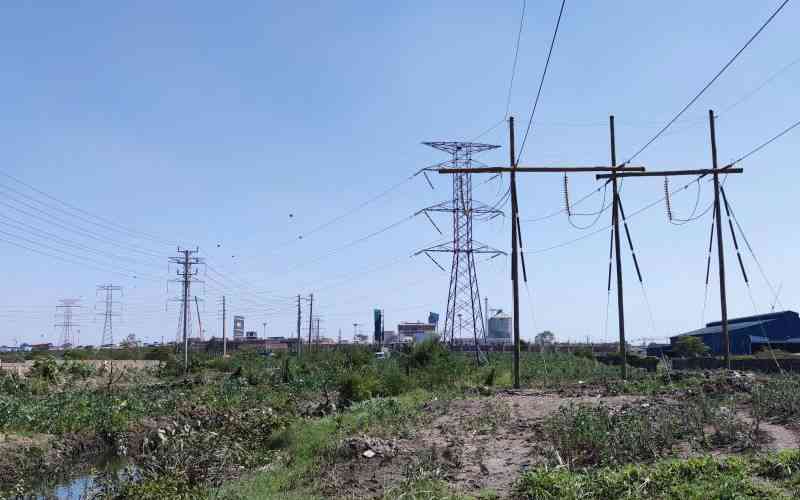 |
|
The Geothermal Development Company rig at Menengai Crater in Nakuru county. [PHOTO: BONIFACE THUKU/STANDARD] |
NAIROBI, KENYA: Most Kenyans have complained or have noted a rapid increase in their electricity bills in the last two months.
Well, according to the Government, this is because of the failed short rains between April and May which has meant that power generation has been through diesel, which is usually more expensive than hydro generation.
As a result, the fuel cost charge on electricity bills has shot up significantly seeing consumers paying higher bills in the last two months further fuelling inflation and the cost of most consumer goods.
Energy and Petroleum Principal Secretary Joseph Njoroge said the situation is likely to be turned around in the next few months once key geothermal power projects are completed and fed into the national grid.
For instance, already 140 megawatts of geothermal has already been fed into the grid in the last two months.
According to the PS, another 70 megawatts will be fed into the grid next month and additional 70MW is October.
In total, 280MW are planned to be injected into the power system from four power plants this year.
All these are projects under the 5000MW ambitious project under the Jubilee administration.
Engineer Njoroge explained that the Government has heavily subsidized the cost of producing the geothermal power so that consumers can access the power at affordable rates.
At the same time, the PS announced that the African Development Bank has shown commitment to provide $150 million (Sh13 billion) for the so called ‘last-mile’ project that aims to increase the number of Kenyans connected with electricity from the current 33 per cent to between 75 and 85 per cent in the next five years.
The entire project will cost almost Sh70 billion ($800 million).
“They (AfDB) have not discussed it, they have said they are considering it,” the PS said.
He was speaking during a luncheon with the Danish Business Network.
On the ambitious 300MW Turkana Wind Power project, Njoroge said the financial closure may be concluded at the end of this week.
This is after the commitment for the construction of a transmission line is concluded.
Stay informed. Subscribe to our newsletter
The Kenya Electricity Transmission Company (Ketraco) is expected to build a 428km 400kV transmission line between Loyangalani in Turkana and Suswa in Narok to join the national grid.
Already, the power purchase agreements for the project have been agreed upon.
The new capacity is expected to increase installed capacity and increase the reserve margin between electricity production and consumption. At the moment demand for electricity is almost outstripping production, with a peak demand of about 1 400MW against an installed capacity of 1 664MW.
Demand outstripping electricity generation has been attributed to years of little investments in generation capacity in the country and rapid growth in the number of people connecting to the grid. Change in consumption patterns have also seen rise in demand, with existing demand from users expanding, especially industrial consumers that are growing their business to tap into the growing economy.
 The Standard Group Plc is a
multi-media organization with investments in media platforms spanning newspaper
print operations, television, radio broadcasting, digital and online services. The
Standard Group is recognized as a leading multi-media house in Kenya with a key
influence in matters of national and international interest.
The Standard Group Plc is a
multi-media organization with investments in media platforms spanning newspaper
print operations, television, radio broadcasting, digital and online services. The
Standard Group is recognized as a leading multi-media house in Kenya with a key
influence in matters of national and international interest.
 The Standard Group Plc is a
multi-media organization with investments in media platforms spanning newspaper
print operations, television, radio broadcasting, digital and online services. The
Standard Group is recognized as a leading multi-media house in Kenya with a key
influence in matters of national and international interest.
The Standard Group Plc is a
multi-media organization with investments in media platforms spanning newspaper
print operations, television, radio broadcasting, digital and online services. The
Standard Group is recognized as a leading multi-media house in Kenya with a key
influence in matters of national and international interest.










